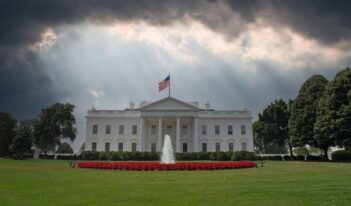
New Hampshire House Bill 1622 will foster enhanced regulatory transparency and improved decision-making.
Upon a rare override of a veto by New Hampshire Governor Chris Sununu, the state recently achieved one small step for regulatory excellence. With a combined 341-11 vote by New Hampshire’s legislature, House Bill 1622 was enacted in October and took effect on December 10, 2024.
Drawing on my experience as the former chief regulatory enforcement official at the U.S. Occupational Safety and Health Administration and as a grateful member of the Penn Program on Regulation (PPR) team that a decade ago explored how environmental and other agencies worldwide should “listen, learn, and lead,” I wrote the initial draft of those portions of this bill that increase regulatory transparency. I greatly admire the legislators from both parties who sponsored and championed it through several hearings.
As a result of the bill’s passage, all administrative agencies in New Hampshire will now have to implement two simple but long-overdue improvements. First, each agency will have to create a website, similar to but not necessarily as elaborate as the familiar Regulations.gov that most federal agencies have used since 2003. The website will house all comments on proposed rulemakings from interested persons More importantly, agencies will have to cease writing response documents that summarize concerns raised by the public and in which the agencies explain why they rejected important criticisms via perfunctory brush-offs. Instead, the new law will require agencies to explain how each “comment influenced the final rule,” or if it did not influence the final rule, to provide a “detailed explanation that includes the facts, data, interpretations, and policy choices that justify why the adopting agency did not amend the rules.”
Online posting of comments is a simple but profound step towards transparency. Online posting gives stakeholders access to arguments and information others have proffered, allowing them to avoid duplicating arguments made elsewhere or to refine arguments that are controversial. It should cut costs for the agencies because it will eliminate expensive “Right to Know” requests for paper copies of comments.
But the greatest benefit of House Bill 1622 is its potential to spur true dialogue between opposing advocates. This dialogue will give agencies a chance to see which arguments can be convincingly rebutted rather than forcing them to puzzle out which aspects of dueling arguments are truly evidence-based.
As important as transparency is and should be, I learned while working on PPR’s Best-in-Class Regulator Initiative that affected citizens often value “apparency”—a chance to understand why decisions are made that may be adverse to their interests. At least in theory, people who lose so that others may win can come away satisfied when they understand the reason for a decision and that the redistribution of costs and benefits could fall in their favor in the future. The very act of having to “explain the why” to an agency’s constituents can lead an agency with integrity to change its mind when it confronts the weakness of its own intended path.
In New Hampshire, we are currently facing exactly such a situation with respect to a major revision of the state’s regulations governing the siting of new solid waste landfills. Given that even “state-of-the-art” landfills inevitably leak and are plagued by above-ground spills, fires, and landslides, the most important aspect of landfill siting is soil permeability at a proposed location. No U.S. state, Canadian province, or foreign country, including various developing nations, allows new landfills in soil through which pollution can flow faster than about 10 feet per month. Many limit siting to areas with permeability less than a rate of one inch per year. But the New Hampshire Department of Environmental Services (DES) recently published a final rule that allows landfill construction in sand or gravel where pollution can move at up to three feet per day.
In light of overwhelming oral and written concern about this matter from technical experts, affected citizens, and state legislators, DES’s response document merely refers to the eight Northeastern states and claims that some of them do not have any numerical criteria at all. Under the new law, in contrast, DES would have to explain why it was content with being one of the weakest, if not the weakest, jurisdictions in the world with its proposed numerical criteria. Although the response document was revised on December 12, 2024, two days after HB 1622 took effect, I assume that if anyone sues DES over this rule, the agency will argue that it was “grandfathered” and did not have to write a substantive response this time.
Similarly, DES received public comments in which experts and affected voters expressed concerns that, under the agency’s proposed rule, a landfill applicant would not be required to investigate how deep beneath the site an aquifer may provide the source for local drinking water wells. In “response,” the agency merely reiterated the non sequitur that its rule would require investigation down to the bedrock, which is of little comfort if there is a drinking-water aquifer 200 feet below where the investigation ceases—that is, a mere 66 days away at maximum flow rate.
The improvements reflected in House Bill 1622 will not themselves suffice to stop agencies from having private ex parte meetings with industry after the formal comment period has ended. But they are welcome baby steps. In the next legislative session, our coalition of experts, affected citizens, and legislators hopes to expand the online-comments requirement to apply also to important adjudications and permits that generate substantial controversy.
A remaining major step is to bring New Hampshire into the mid-20th century with respect to judicial review of agency action. At least 35 states’ laws mirror the standard at the heart of the federal Administrative Procedure Act—namely, that affected parties should be able to challenge an agency action as “arbitrary or capricious” without having to bear any special evidentiary burden. But New Hampshire tells its judges to assume that the agency acted properly unless a plaintiff can show “by clear preponderance of evidence that it was unreasonable or unlawful,” while severely limiting the evidence plaintiffs can offer.
Eventually, we hope to effect the biggest change of all—bringing cost-benefit analysis of agency action to New Hampshire. Since 1981, federal agencies have had to consider the substantive benefits and costs of each major rule. In New Hampshire, the only relevant question during legislative oversight and judicial review concerns the legality of the rule—not whether it was wise and fair.
One thing I learned while trying to make the case that New Hampshire’s regulatory processes are “exceptional”—and not in a good way—is that there are few good sources of information about comparative state regulatory practices. I was fortunate to find a one-stop source of texts of state administrative procedure laws, but other than essays such as a recent one in The Regulatory Review about particular states that are ahead of the pack, it is difficult to gauge to what extent, for example, the cost-benefit thinking that is the norm in Washington has reached the hinterlands. Perhaps the Administrative Conference of the United States, National Academy of Public Administration, or another similar advisory body could commission research on state practices and encourage as part of that research the creation of 50-state maps and charts of regulatory governance.
House Bill 1622 was an ironic victory for transparency. No agency officials testified against the bill in either chamber of the legislature, but Governor Sununu vetoed it on the grounds that “multiple agencies expressed concerns.” These concerns, which had to have been made in private, almost scuttled a law designed to make these very agencies a bit more public facing! Fortunately, both progressives concerned about agency capture and conservatives concerned about agency arrogance have joined forces to make New Hampshire agencies more accountable, approachable, and “apparent.”




